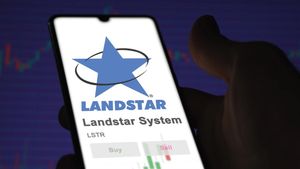− If Approved, TAKHZYRO Would Be the First and Only Prophylaxis Treatment Available for HAE Patients Younger Than 6 Years of Age 1-3
− Filing is Based on Data from Phase 3 SPRING Study in Pediatric Patients 2 to <12 Years of Age
− HAE is a Rare, Debilitating and Potentially Life-Threatening Condition that Causes Unpredictable and Serious Attacks that May Occur Very Early in Childhood 4,5
Takeda (TSE:4502/NYSE: TAK) today announced that the U.S. Food & Drug Administration (FDA) has accepted a supplemental Biologics License Application (sBLA) for the potential expanded use of TAKHZYRO® (lanadelumab-flyo) for prophylaxis to prevent attacks of hereditary angioedema (HAE) in pediatric patients 2 to <12 years of age. Currently, children with HAE under the age of 6 have no approved prophylaxis treatment. If approved, TAKHZYRO could potentially become the first treatment of its kind for this population.1-3 The FDA has granted priority review of the application and indicated a decision is expected in the first half of 2023.
"Unpredictable, debilitating and potentially life-threatening HAE swelling attacks can cause a physical and emotional toll on those living with this rare disorder; this is burdensome for young children and their caregivers,” said Cheryl Schwartz, Senior Vice President, U.S. Rare Disease Business Unit at Takeda. “If TAKHZYRO is approved for this expanded use, children as young as 2 years old would have a treatment option which has shown proven effective prevention of HAE attacks in those over 12 years of age.”
The sBLA is based on data from the SPRING study, the first and only open-label Phase 3 trial for HAE patients under the age of 12. If approved, children in the U.S. would have access to treatment for the prevention of HAE attacks, which can involve serious and severely debilitating swelling in the abdomen, face, feet, genitals, hands and throat.4,6 Potentially fatal upper airway angioedema has been reported in patients as young as 3 years old.5
Currently, TAKHZYRO is approved and available in more than 30 countries around the world and is supported by a robust clinical development program, which includes one of the largest prevention studies in HAE with the longest active treatment duration.
About TAKHZYRO® (lanadelumab-flyo) Injection
TAKHZYRO is a prescription medicine used to prevent attacks of hereditary angioedema (HAE) in people 12 years of age and older. It is not known if TAKHZYRO is safe and effective in children under 12 years of age. TAKHZYRO is intended for self-administration or administration by a caregiver with subcutaneous injection of 300 mg/2 mL (150 mg/1 mL) solution in a single-dose prefilled syringe or in a single-dose vial every 2 weeks. Dosing every 4 weeks may be considered in some patients. The patient or caregiver should be trained by a healthcare professional.7
TAKHZYRO Safety Information for United States
TAKHZYRO may cause serious side effects, including allergic reactions. Call your healthcare provider or get emergency help right away if you have any of the following symptoms:
- wheezing
- difficulty breathing
- chest tightness
- fast heartbeat
- faintness
- rash
- hives
The most common side effects seen with TAKHZYRO were injection site reactions (pain, redness, and bruising), upper respiratory infection, and headache.
These are not all the possible side effects of TAKHZYRO. For more information, ask your healthcare provider or pharmacist. You may report side effects to the FDA at 1-800-FDA-1088.
TAKHZYRO has not been studied in pregnant or breastfeeding women. Talk to your healthcare provider about the risk of taking TAKHZYRO if you are pregnant, plan to be pregnant, are breastfeeding, or plan to breastfeed.
Please see full Prescribing Information, including information for patients.
About Hereditary Angioedema
Hereditary Angioedema (HAE) is a rare genetic disorder that results in recurring attacks of edema – swelling – in various parts of the body, including the abdomen, face, feet, genitals, hands and throat. The swelling can be debilitating and painful.4,6 Attacks that obstruct the airways can cause asphyxiation and are potentially life-threatening.6 HAE affects an estimated 1 in 50,000 people worldwide.4 It is often under-recognized, under-diagnosed and under-treated.8
About Takeda
Takeda is a global, values-based, R&D-driven biopharmaceutical leader headquartered in Japan, committed to discover and deliver life-transforming treatments, guided by our commitment to patients, our people and the planet. Takeda focuses its R&D efforts on four therapeutic areas: Oncology, Rare Genetics and Hematology, Neuroscience, and Gastroenterology (GI). We also make targeted R&D investments in Plasma-Derived Therapies and Vaccines. We are focusing on developing highly innovative medicines that contribute to making a difference in people’s lives by advancing the frontier of new treatment options and leveraging our enhanced collaborative R&D engine and capabilities to create a robust, modality-diverse pipeline. Our employees are committed to improving quality of life for patients and to working with our partners in health care in approximately 80 countries and regions. For more information, visit https://www.takeda.com.
Important Notice
For the purposes of this notice, “press release” means this document, any oral presentation, any question and answer session and any written or oral material discussed or distributed by Takeda Pharmaceutical Company Limited (“Takeda”) regarding this release. This press release (including any oral briefing and any question-and-answer in connection with it) is not intended to, and does not constitute, represent or form part of any offer, invitation or solicitation of any offer to purchase, otherwise acquire, subscribe for, exchange, sell or otherwise dispose of, any securities or the solicitation of any vote or approval in any jurisdiction. No shares or other securities are being offered to the public by means of this press release. No offering of securities shall be made in the United States except pursuant to registration under the U.S. Securities Act of 1933, as amended, or an exemption therefrom. This press release is being given (together with any further information which may be provided to the recipient) on the condition that it is for use by the recipient for information purposes only (and not for the evaluation of any investment, acquisition, disposal or any other transaction). Any failure to comply with these restrictions may constitute a violation of applicable securities laws.
The companies in which Takeda directly and indirectly owns investments are separate entities. In this press release, “Takeda” is sometimes used for convenience where references are made to Takeda and its subsidiaries in general. Likewise, the words “we”, “us” and “our” are also used to refer to subsidiaries in general or to those who work for them. These expressions are also used where no useful purpose is served by identifying the particular company or companies.
Forward-Looking Statements
This press release and any materials distributed in connection with this press release may contain forward-looking statements, beliefs or opinions regarding Takeda’s future business, future position and results of operations, including estimates, forecasts, targets and plans for Takeda. Without limitation, forward-looking statements often include words such as “targets”, “plans”, “believes”, “hopes”, “continues”, “expects”, “aims”, “intends”, “ensures”, “will”, “may”, “should”, “would”, “could” “anticipates”, “estimates”, “projects” or similar expressions or the negative thereof. These forward-looking statements are based on assumptions about many important factors, including the following, which could cause actual results to differ materially from those expressed or implied by the forward-looking statements: the economic circumstances surrounding Takeda’s global business, including general economic conditions in Japan and the United States; competitive pressures and developments; changes to applicable laws and regulations, including global health care reforms; challenges inherent in new product development, including uncertainty of clinical success and decisions of regulatory authorities and the timing thereof; uncertainty of commercial success for new and existing products; manufacturing difficulties or delays; fluctuations in interest and currency exchange rates; claims or concerns regarding the safety or efficacy of marketed products or product candidates; the impact of health crises, like the novel coronavirus pandemic, on Takeda and its customers and suppliers, including foreign governments in countries in which Takeda operates, or on other facets of its business; the timing and impact of post-merger integration efforts with acquired companies; the ability to divest assets that are not core to Takeda’s operations and the timing of any such divestment(s); and other factors identified in Takeda’s most recent Annual Report on Form 20-F and Takeda’s other reports filed with the U.S. Securities and Exchange Commission, available on Takeda’s website at: https://www.takeda.com/investors/sec-filings/ or at www.sec.gov. Takeda does not undertake to update any of the forward-looking statements contained in this press release or any other forward-looking statements it may make, except as required by law or stock exchange rule. Past performance is not an indicator of future results and the results or statements of Takeda in this press release may not be indicative of, and are not an estimate, forecast, guarantee or projection of Takeda’s future results.
Medical information
This press release contains information about products that may not be available in all countries, or may be available under different trademarks, for different indications, in different dosages, or in different strengths. Nothing contained herein should be considered a solicitation, promotion or advertisement for any prescription drugs including the ones under development.
References
- HAEGARDA® (C1 Esterase Inhibitor Subcutaneous [Human]). Product Characteristics.
- CINRYZE® (C1 esterase inhibitor [human]). Prescribing Information.
- Farkas H, Martinez-Saguer I, Bork K, et al. International consensus on the diagnosis and management of pediatric patients with hereditary angioedema with C1 inhibitor deficiency. Allergy. 2017;72(2):300-313. doi:10.1111/all.13001.
- Busse PJ, Christiansen SC, Riedl MA, et al. US HAEA Medical Advisory Board 2020 Guidelines for the Management of Hereditary Angioedema. J Allergy Clin Immunol Pract. 2021 Jan;9(1):132-150.e3.
- Bork K, Hardt J, Schicketanz KH, Ressel N. Clinical studies of sudden upper airway obstruction in patients with hereditary angioedema due to C1 esterase inhibitor deficiency. Arch Intern Med. 2003;163(10):1229–35. doi: 10.1001/archinte.163.10.1229.
- Banerji A. Hereditary angioedema: Classification, pathogenesis, and diagnosis. Allergy Asthma Proc. 2011;32:403–407.
- TAKHZYRO® (lanadelumab-flyo) injection. Prescribing Information.
- Longhurst HJ, Bork K. Hereditary angioedema: an update on causes, manifestations, and treatment. Br J Hosp Med. 2019;80(7):391-398.
View source version on businesswire.com: https://www.businesswire.com/news/home/20221004006135/en/
Contacts
Media Contacts:
U.S. Media
Erin-Marie Beals
erin-marie.beals@takeda.com
+1 781-336-9417
Ex-U.S. Media
JC Molina
juan.molina@takeda.com






